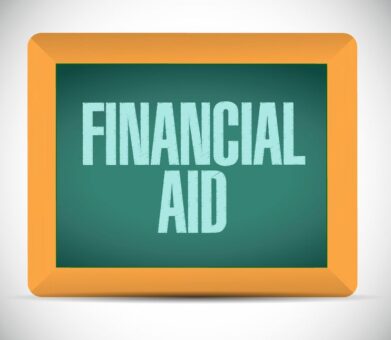
What Is a FAFSA?
FAFSA stands for Free Application for Federal Student Aid. It is a form that determines eligibility for federal student loans, Pell Grants, and other financial aid offered by the government. The application assesses a student’s household income and other factors to put a monetary value on a student’s financial need.
Most colleges require students to complete a FAFSA once a year, even if they are not applying for a Pell Grant or student loan. That is because the FAFSA calculates an Expected Family Contribution (EFC). An EFC is a score that says approximately how much money the household should contribute to the student’s education. Students who score an EFC of 0 are not expected to have any out of pocket expenses, so they are eligible for the maximum value of scholarships and grants. Schools and award issuers can use this information to approve a student’s application for aid.
What Is a Pell Grant?

Win more scholarships with less effort
Simplify and focus your application process with the one-stop platform for vetted scholarships.
Check for scholarshipsPell Grants can be used to pay for tuition, fees, books and school supplies, but they cannot be used for room and board. Students may continue to receive Pell Grants for up to 12 semesters as long as they maintain satisfactory academic progression.
Difference between FAFSA and Pell Grant
The FAFSA is the application to get a Pell Grant. The Pell Grant is an actual form of student aid. You can use your FAFSA to access other forms of financial aid, including subsidized and unsubsidized student loans. Every year when you apply for a Pell Grant, you will need to submit a new FAFSA.
Using Your FAFSA to Get a Pell Grant

The FAFSA will ask for information about where you live, where you attend school, how long you have left on your degree, etc. It will also request specific information about your household income based on your tax returns. If you are a dependent student (the application will determine that), you will also need to include your parents’ income information on the form.
If you have not filed your taxes for the year yet, you can enter approximate information into the FAFSA and update the app later on. If you have already filled out a FAFSA for a previous year, you have the option to automatically generate answers. This will save you time on the new application, and all you have to do is verify that the generated content is still accurate.
Final Steps
Once you have answered all the questions for your FAFSA, you will receive a Student Aid Report (SAR) by email. This shows your EFC and other information about your application. If there was an issue with your FAFSA, your SAR will explain what you need to do to resolve those issues.

During your FAFSA, you will select schools you want the report sent to. Your school’s financial aid office will receive this data and determine what types of financial aid you are eligible for, including your Pell Grant value. This process may only take a few days or it may take a few weeks, depending on your school. After they decide how much aid you are eligible for, you can select which awards you want to accept (including specific loans and some or all of your max Pell Grant). Choose the options that best fit your needs, and continue looking for other sources of financial aid as needed.


